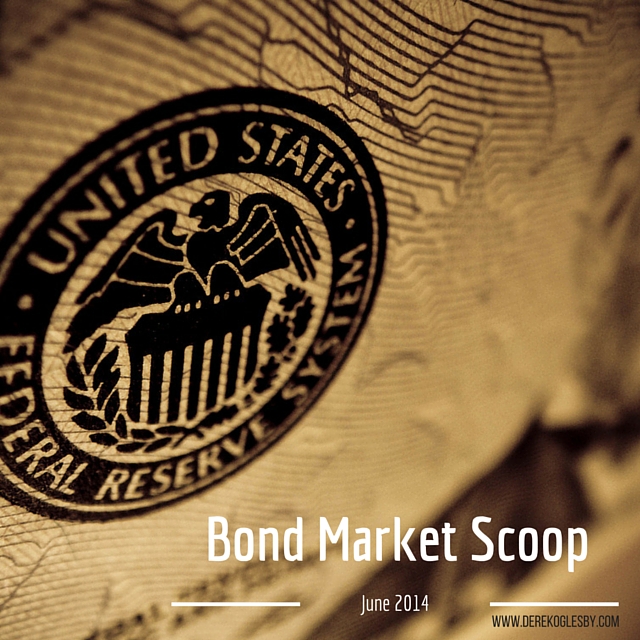
The Fed
While the Federal Reserve (Fed) did not have a scheduled policy meeting in May, the Fed was quite vocal during the month. After Fed Chair Janet Yellen’s press conference mishap in March telling reporters about interest rate movement expectations, subsequent statements by her and other policy makers tempered speculation on an acceleration of rate increases. She also emphasized the economy isn’t meeting the Fed’s goals and hasn’t fully regained its health.
Yield Curve
The shape of the U.S.Treasury yield curve flattened last month. The yield spread between the 3-month bill and 5-year note declined by 0.14% to 1.51%, while the 2-year and 5-year spread fell by 0.10%.
Expectations of the Fed raising short-term interest rates were unchanged in May after marginally increasing a month prior. Fed officials have intently tried to lessen the expectation of the pace of raising rates.
Interesting Observation
GDP’s Fall – The U.S. economy declined at an annual rate of 1.0% in the first quarter of this year. This is down significantly from the “positive” 0.1% advance estimate released last month and makes Q1 the U.S. economy’s worst quarter in hree years. The downward revision was primarily due to declining inventories, an area hat was mostly blamed by the polar vortex.
Monthly Wrap-up
Most Fed officials remain dovish on monetary policy. Fed Chair Janet Yellen said in testimony last month that the central bank will probably have removed all of the QE stimulus by the fall, however, “a high degree of monetary accommodation remains warranted,” stated Yellen, with indicators for inflation and employment far from the Central Bank’s goals. Alternatively, notorious Fed hawk Jeffrey Lacker stated that inflation may not need to be too high before the central bank decides to raise interest rates. While inflation has remained below the central bank’s 2% target for almost two years, the Fed’s preferred inflation gauge, the personal consumption expenditures index, has now risen to 1.6% over the past year.
The European Central Bank (ECB) introduced an unprecedented round of measures to help boost economic growth and combat deflation in Europe. One of these measures included cutting the ECB’s deposit rate to “minus” 0.1%, making the institution the first major central bank to use a negative rate. This rate action coupled with the dovish monetary policy stance from our Fed suggests that inflation expectations may climb higher and the recent decline in interest rate levels may not be temporary.
